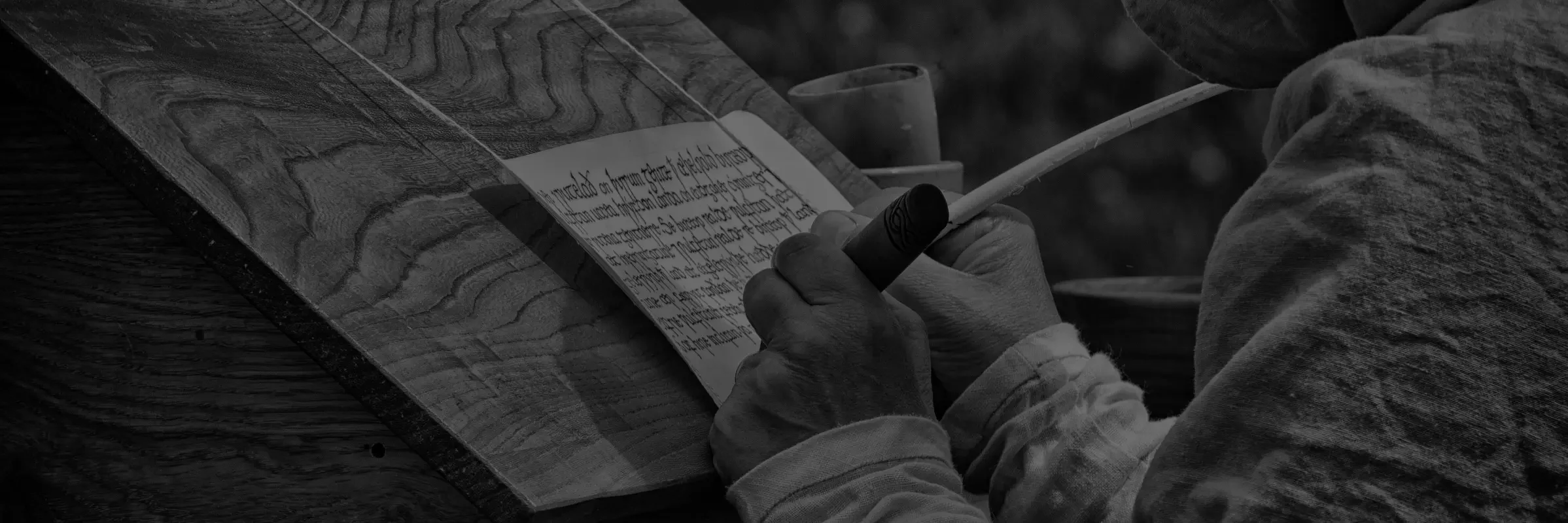Wirral's Hidden History Revealed
The Case for the Dingesmere
A salient and critical factor in discovering the site of the battle of Brunanburh will be the identification of the Dingesmere, a formidable area of marshland which played a significant factor in the escape of the surviving Norse, Scottish and British of Strathclyde following their defeat in the battle.
The Battle of York
The ancient Roman Legionary fortress of Eboracum had been occupied by the Northumbrian Angles following the departure of the Roman military. The great walls were still standing and from the 6th century onwards, it developed into Northumbria’s capital city.
The Vikings in Wales
The Viking’s initial incursions into Wales were raids to capture booty and slaves.
The vast majority of these raids and their outcomes are highly unlikely to have been recorded.
Wales during this period consisted of a number of tribal Kingdoms whose inhabitants were able to use the terrain to their advantage by exploiting their skill at guerrilla warfare by launching ambushes on invading enemies and then retreating into their mountain fastnesses. Full on pitched battles were rare.
THE BATTLE OF NORTHAM JUNE 1069
The battle of Northam took place between the north Devon villages of Appledore and Northam in 1069. Two sons of Harold Godwinson, the English King killed at Hastings on the 14th of October 1066, namely Godwin and Edmund, returned to England with the intent of initiating an Anglo-Saxon rebellion to overthrow the Norman King, William.
The Harrying of the North.
After Duke William’s victory at the battle of Hastings on the 14th of October 1066 there is a general acceptance that England was completely subjugated by the Normans and that the English population was totally pacified. This was not the case and the Normans would pay a high price in both blood and treasure to finally establish dominance.
Arthur – Once And Future King
Of all the myths and legends of Britain the most enigmatic and intriguing hero is Arthur. Forget the late romantic versions of the later medieval period, the knights of the round table, Camelot, Gwynevere, Lancalot, the Green Knight and a hundred and one other mystical and mythical characters and instead, look for a late Romano warlord who, for a generation, halted the Saxon advance into the west of Britain.
Ingimunds Attack On Chester 907AD
In 907 AD, Ingimund, a Hiberno-Norse chieftain, who had been allowed to settle on the north Wirral coast by Aethelflaed, sometime in 902, led an attack on the city of Chester.
Battle of Fulford Gate
Of the 3 major battles of the momentous year of 1066, the battle which took place at Fulford is the least known, yet it was a fierce engagement and one that must have weakened the Viking army led by their infamous leader, King Harald Hardrada of Norway.
The Coming of the Anglo Saxons
In the twilight years of the Roman province of Britannia the Roman Emperor Honorius advised the Romano British to look to their own defence of the land as he withdrew the last of the Roman military from the island.
Barbarian tribes were on the move throughout Europe and decades of economic and military disasters would bring about the downfall of western Empire, albeit, it would be 476AD, before the last western Emperor, Romulus Augustulus was forced to abdicate and to retire into obscurity by the Germanic warlord, Odoacer, who then proclaimed himself King of Italia.
Ragnar Lodbrok – Man, Myth or Tall Story
The popular TV series ‘VIKINGS’ has ignited a renewed interest in the period of early medieval history and whilst entertaining, many of the characters are fictitious and most of the events never occurred in the fashion in which they have been portrayed even if they occurred at all.
Battle of Anglesey Sound
Magnus Barelegs and the Vikings in Anglesey and the battle of Anglesey sound 1098 AD
Following the Norman conquest of Anglo-Saxon England in 1066, there is a mistaken belief that Viking activities ceased in the British isles. In Scotland, the Viking age can be said to have come to its final end, following the battle of Largs in 1263.
The Battle of Cynwit
The defeat of Ubba Ragnarsson and the Vikings
The battle of Cynwit is a little known engagement yet it was important for a number of reasons.
Ubba Ragnarsson, son of the legendary Ragnar Ladbrok and brother to Ivar the boneless, Halfdan Ragnarsson, Sigurd snake in the eye, Hvitserk and Bjorn Ironside, landed with an army in Devon. The Vikings are said to have arrived in a fleet of 23 ships and to have numbered 1200 men.
The Vikings in North America
There is increasing evidence that Viking adventurers and settlers made it to North America and that they occupied some coastal areas, albeit only for a short period.
Viking raids for slaves and booty
The words of of wisdom below are attributed to Odin (havi -the advice of the high one) and are from a collection of old Norse poems contained within the Codex Regius
Viking – Military Tactics
Viking, Norsemen, Danes, a fierce pagan people who in the late 8th century began to raid the British Isles, Western Europe and the Mediterranean and who terrorised both the Christian and Muslim peoples of the civilised world.

